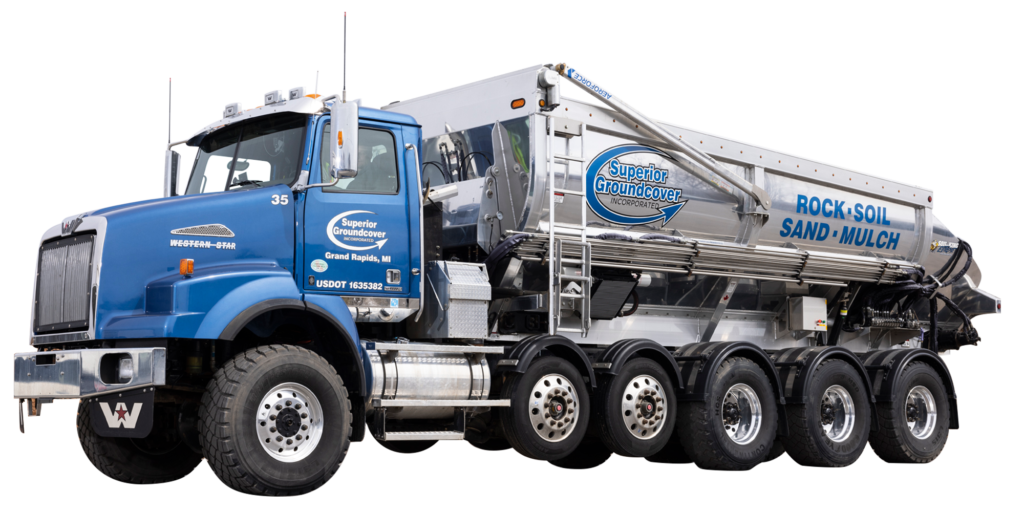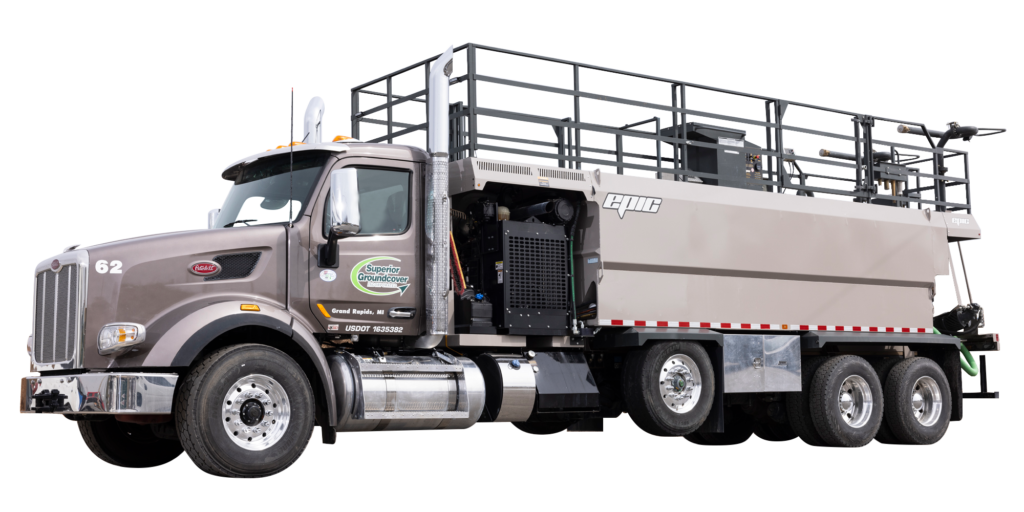Understanding residential and commercial foundation drainage systems is a complex and confusing topic for home-owners and property managers. There are several drainage methods when it comes to protecting your home or property. The goal is to successfully avoid complications resulting from water damage like foundation cracks, mold, settling, and more.
Consequently, these types of damage lead to irreversible and dangerous problems for the building and property. Because damages of this nature are somewhat avoidable, they likely won’t be covered by insurance. Luckily, drainage systems exist to protect buildings from moisture!
Interior vs Exterior Foundation Drainage Solutions
How do exterior foundation drainage systems work?
Foundation drains are buried underground and therefore, not visible. They’re constructed of perforated 4-inch plastic, PVC or flexible ABS pipe. The pipe is positioned to run along the perimeter of the house or building. This pipe is referred to as “Drain Tile.”
A foundation drain works by attracting water in the soil around the property from rain, melting snow, or rising groundwater. Once collected, the water is carried away from the structure which prevents flooding and most importantly, residual water damage.
Conditions vary from site to site and require varied materials. There are different variations of drain tile like sock tile for example. A sock tile is a drain tile covered by a permeable mesh, called a “sock”. The sock acts as a filter that helps prevent dirt from entering or clogging drain pipe.
Differences between interior and exterior foundation drainage systems:
Interior drainage systems like foundation waterproofing and damp proofing are a longer-lasting alternative to exterior drainage systems. For instance, exterior drainage systems can clog with dirt and become ineffective over time. They are also incredibly difficult to access should an issue arise. This is primarily due to their location, usually placed beneath landscaping, decks, or other obstacles.
Other hazards like buried gas or water lines, sewage, or electrical wiring can make repair difficult. Excavating damaged exterior drainage systems can also be dangerous. In other words, it helps to hire a professional when working with exterior drainage systems.
Interior drainage systems are alternatively much safer and more convenient to access. They are located directly on top of the footing around the perimeter of your basement. This area is the “clear water zone.”
These systems don’t require any trenches to be dug in the yard as exterior drainage systems do. Instead, a drain pipe is installed and covered with gravel at the bottom of the wall and filled with cement.
Interior drainage systems work by collecting water from where the floor and wall meet. Subsequently, they also collect water from the walls themselves. This prevents it from draining to the center of the basement floor where it could pool and cause lasting damage. Interior drains work with Sump Pumps (defined below) to effectively keep basements dry and protected from damage.
What Are The Different Types of Drainage Systems?
French Drains, Foundation Drains, Perimeter Drains
A French Drain is another name for a Foundation or Perimeter Drain. The French Drain gets its name from its inventor, Henry French, who popularized the method in the 1800s.
As described above, a French Drain is a perforated plastic pipe, buried underground. It effectively collects and relocates water to avoid foundation damage.
Footing Drains
A Footing Drain is an exterior foundation drainage system outside the foundation wall. Footing drains exist in both commercial and residential buildings. The drain itself is covered with gravel which allows the water to seep into the tile. The Footing Drain diverts water to a catch basin, which then is pumped to a storm drain.
Sump Pits and Pumps
A Sump Pit is a hole in the basement or crawlspace of a house or commercial building.
A Sump Pump sits inside of the Sump Pit.
Water enters the Sump Pit and triggers a sensor that activates the Sump Pump, turning it on. The Sump Pump then moves water away from the structure through pipes. It runs through electricity or sometimes even battery power.
Why is Foundation Drainage Important?
Water damage can range from cosmetic to catastrophic — and some of it might not be covered by insurance.
Noticing water spots or mold in and around your basement? That could be a sign of something more dangerous for the structure of your property.
For instance, without proper foundation drainage around basement walls, water can saturate the soil beneath a building or home.
As a result, the ground will shift. This movement can cause foundation cracks. Think of when changes in weather cause roads to crack. After that, the shifting can lead to stress in other areas of the building as it “settles” and appear as cracks in walls or ceilings.
Moisture can easily penetrate further into the property when there is structural damage, making mold more likely and invasive. Mold can potentially be dangerous to your health if it goes unnoticed for too long. This CDC article on mold and dampness explains the ramifications of prolonged mold exposure.
What are the Advantages of Foundation Drainage?
In addition to protecting your property from dangerous and irreversible structural damage, drainage systems can also help with soil care. They can prevent erosion, standing water, and other landscaping issues.
Rainwater can displace soil from your yard. Therefore, the erosion can result in a lack of soil depth, and ruin your landscaping. It can also pool, creating standing water. As a result, the standing water drowns plants and other landscaping.
What are the Disadvantages of Foundation Drainage?
A foundation drainage system is a necessary part of protecting the structural integrity of any home or building. There are advantages and disadvantages to each method. Interior drainage systems can be easier and safer to install and maintain over time.
Different types of soil or clay on the property can affect the foundation and drainage systems. Clay, for example, is a very expansive material, making it tough to deal with. As it expands and contracts with moisture and temperature change, foundation shifting can occur and lead to cracking. To have a long-term foundation drainage solution work, soil types must be considered.
You can avoid possible disadvantages and issues with foundation drainage systems by working with a professional team on your project. The pros can gauge which drainage method will work best for your property. They can also help ensure whichever system is chosen will last and require the least amount of maintenance.
Installing Foundation Drainage systems without a professional is difficult. Similarly, it can also be time-consuming and could even exempt you from insurance coverage should the system fail.
Professional Installation of Foundation Drainage Systems
It can be tough to find the right professional team for the job. Superior Groundcover has years of experience installing both residential and commercial foundation drainage systems across the Midwest.
Superior’s drain tile installation crew makes quick work of the install. We have experience installing sock tile, perforated tile, solid tile, and sump pumps for residential and commercial foundations. Our stone slinger trucks are used for placing peastone up to 70′ from the truck. We can get material in the toughest to reach areas.
Our blower truck fleet offers our clients an additional solution for installing peastone under homes, already framed in. Our blower truck installation service is the perfect solution for pea stone placement in limited access areas.
Superior also provides foundation waterproofing and damp proofing service which is unmatched in the industry.
Have Questions?
Have more questions for the professional team at Superior? Ready to start your Foundation Drainage project? Contact us.
Read more about our Foundation Drainage Services.




